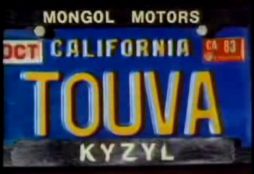A second post in a series of posts about Information Theory/Learning based perspectives in Evolution, that started off from the last post.
Although the last post was mostly about a historical perspective, it had a section where the main motivation for some work in metabiology due to Chaitin (now published as a book) was reviewed. The starting point about that work was to view evolution solely through an information processing lens (and hence the use of Algorithmic Information Theory). Ofcourse this lens by itself is not a recent acquisition and goes back a few decades (although in hindsight the fact that it goes back just a few decades is very surprising to me at least). To illustrate this I wanted to share some analogies by John Maynard Smith (perhaps one of my favourite scientists), which I had found to be particularly incisive and clear. To avoid clutter, they are shared here instead (note that most of the stuff he talks about is something we study in high school, however the talk is quite good, especially because it tends to emphasize on the centrality of information throughout). I also want this post to act as a reference for some upcoming posts.
Coda:
Molecular Biology is all about Information. I want to be a little more general than that; the last century, the 19th century was a century in which Science discovered how energy could be transformed from one form to another […] This century will be seen […] where it became clear that information could be translated from one from to another.
[Other parts: Part 2, Part 3, Part 4, Part 5, Part 6]
Throughout this talk he gives wonderful analogies on how information translation underlies the so called Central Dogma of Molecular Biology, and how if the translation was one-way in some stages it could have implications (i.e how August Weismann noted that acquired characters are not inherited by giving a “Chinese telegram translation analogy”; since there was no mechanism to translate acquired traits (acquired information) into the organism so that it could be propagated).
However, the most important point from the talk: One could see evolution as being punctuated by about 6 or so major changes or shifts. Each of these events was marked by the way information was stored and processed in a different way. Some that he talks about are:
1. The origin of replicating molecules.
2. The Evolution of chromosomes: Chromosomes are just strings of the above replicating molecules. The property that they have is that when one of these molecules is replicated, the others have to be as well. The utility of this is the following: Since they are all separate genes, they might have different rates of replication and the gene that replicates fastest will soon outnumber all the others and all the information would be lost. Thus this transition underlies a kind of evolution of cooperation between replicating molecules or in other other words chromosomes are a way for forced cooperation between genes.
3. The Evolution of the Code: That information in the nucleic could be translated to sequences of amino acids i.e. proteins.
4. The Origin of Sex: The evolution of sex is considered an open question. However one argument goes that (details in next or next to next post) the fact that sexual reproduction hastens the acquisition from the environment (as compared to asexual reproduction) explains why it should evolve.
5. The Evolution of multicellular organisms: A large, complex signalling system had to evolve for these different kind of cells to function in an organism properly (like muscle cells or neurons to name some in Humans).
6. Transition from solitary individuals to societies: What made these societies of individuals (ants, humans) possible at all? Say if we stick to humans, this could have only happened only if there was a new way to transmit information from generation to generation – one such possible information transducing machine could be language! Thus giving an additional mechanism to transmit information from one generation to another other than the genetic mechanisms (he compares the genetic code and replication of nucleic acids and the passage of information by language). This momentous event (evolution of language ) itself dependent on genetics. With the evolution of language, other things came by: Writing, Memes etc. Which might reproduce and self-replicate, mutate and pass on and accelerate the process of evolution. He ends by saying this stage of evolution could perhaps be as profound as the evolution of language itself.
________________
As a side comment: I highly recommend the following interview of John Maynard Smith as well. I rate it higher than the above lecture, although it is sort of unrelated to the topic.
________________
Interesting books to perhaps explore:
1. The Major Transitions in Evolution: John Maynard Smith and Eörs Szathmáry.
2. The Evolution of Sex: John Maynard Smith (more on this theme in later blog posts, mostly related to learning and information theory).
________________





















